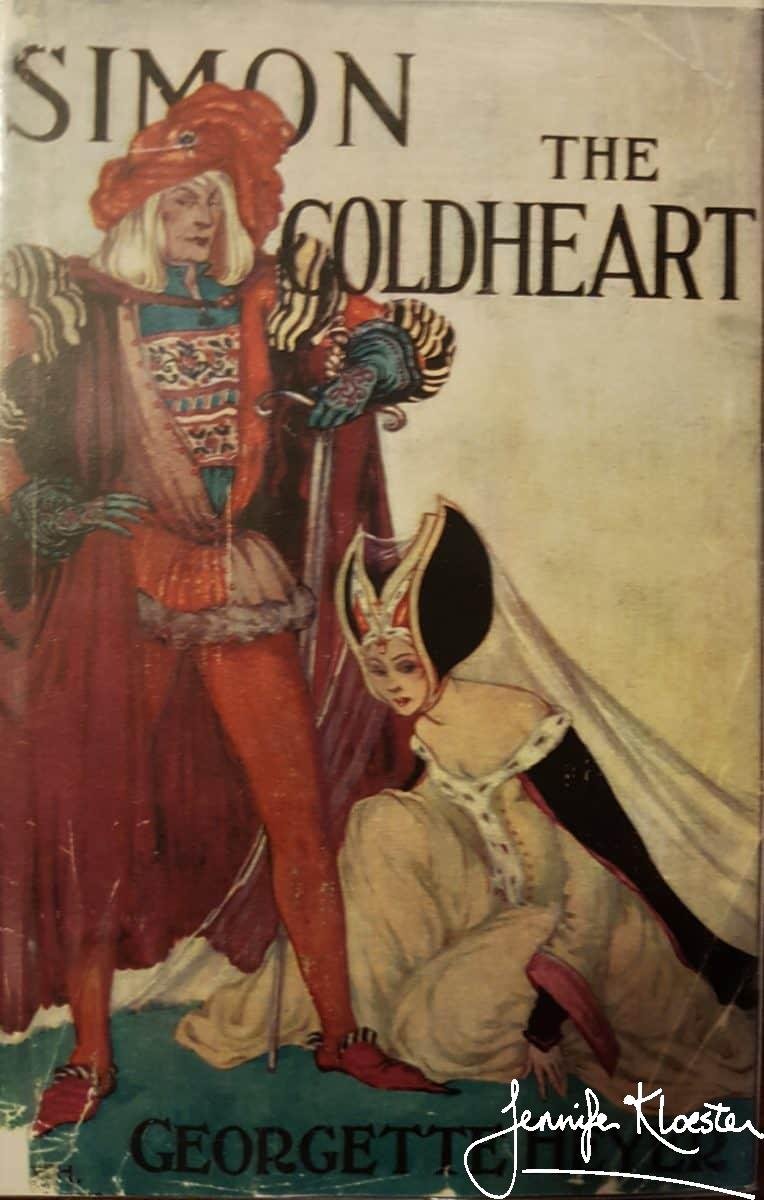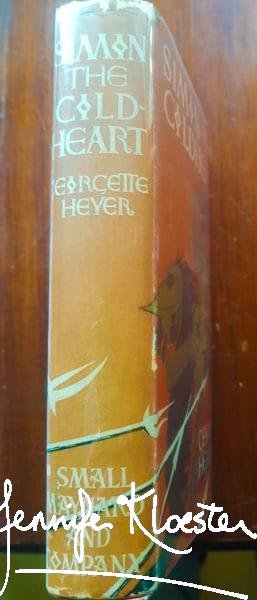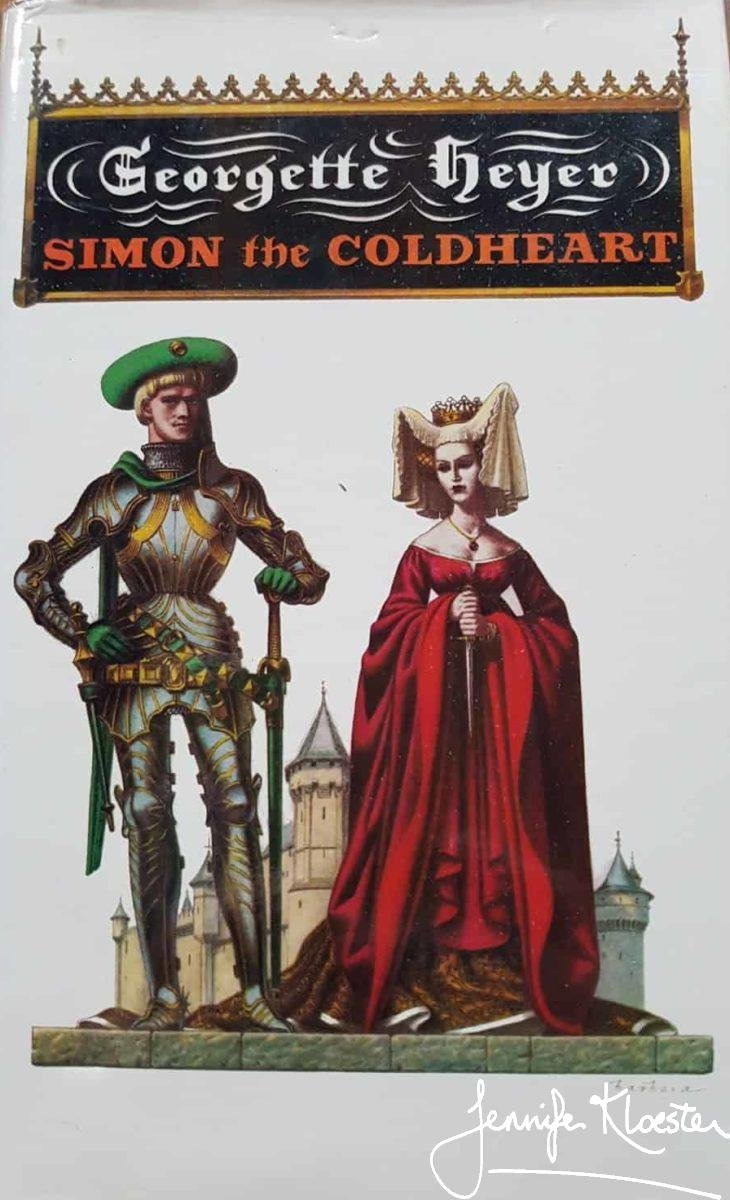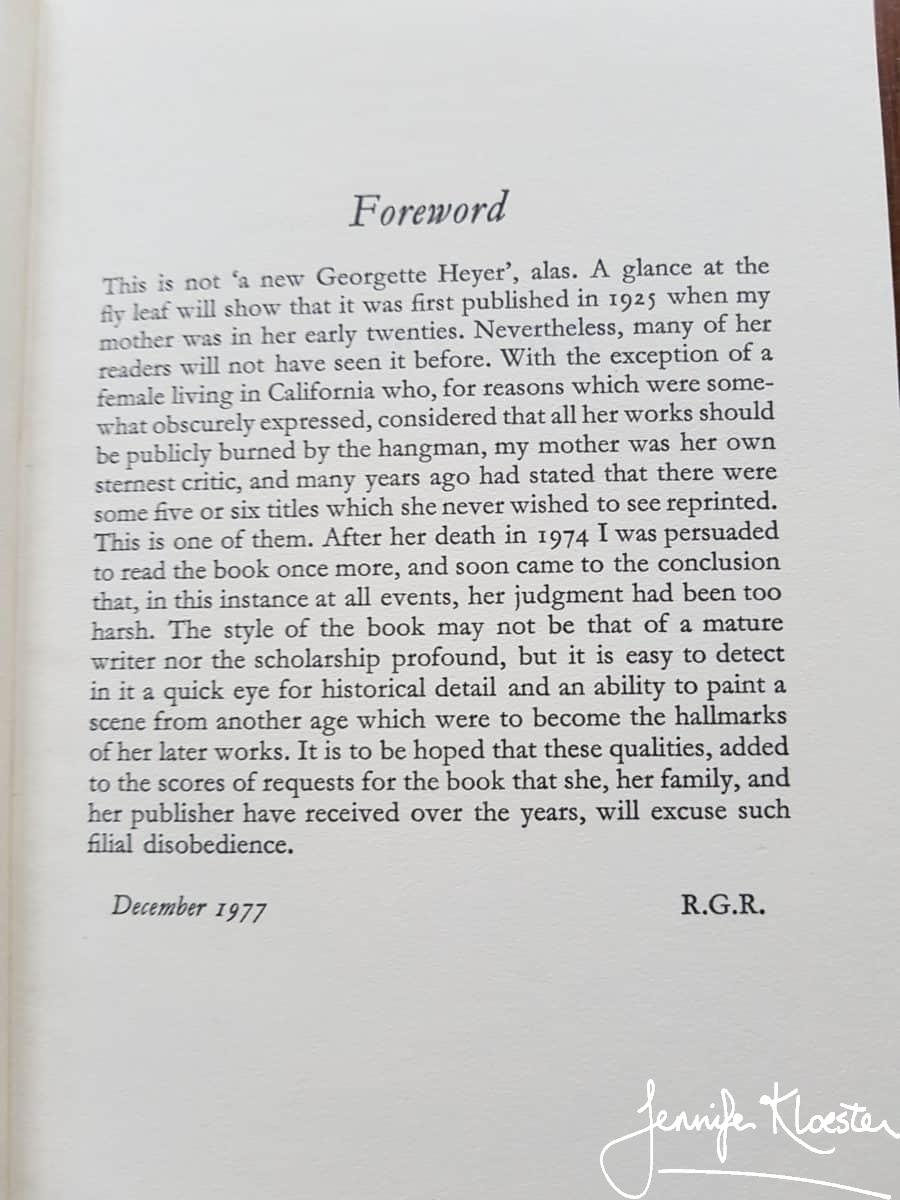
A hero with attitude!
I love Simon the Coldheart because from the moment he walks (literally) onto the page you’re hooked. Simon is one of Georgette Heyer’s truly compelling characters. At the beginning of the book he is only fourteen and yet he has a presence and a way of speaking that draws you in and keeps you reading. I just love his attitude!
‘I have never approached my goal through the back door, my lord, nor ever will. I march straight.’
Simon the Coldheart, Georgette Heyer, Pan, 1979, p.17
Shakespeare’s influence
Simon the Coldheart is not an eighteenth-century Heyer novel, but a medieval story set in the reigns of King Henry IV and Henry V. Georgette had grown up reading Shakespeare and the Bard’s words and stories were deeply familiar to her. Throughout her writing career she would often reference Shakespeare in her books’ titles as well as in her characters’ interactions, personalities and speech. It may have been Shakespeare’s ‘Henry’ plays that inspired her love of the medieval era. Certainly her fascination for the period and for characters such as Hotspur in Henry IV and good King Harry in Henry V shows in Simon the Coldheart. Throughout her life Georgette would pursue her deep interest in the medieval era and Simon the Coldheart would be the first of three medieval novels – each of them important in her writing career.

Lizzie Caswall Smith – Folger Shakespeare Library Digital Image Collection http://luna.folger.edu/luna/servlet/s/625d3g
Simon’s choice
Simon is the illegitimate son of one Geoffrey of Malvallet and a peasant woman, Jehanne. Simon’s mother is dead and he feels no allegiance to his father but seeks instead a place at the court of the Earl of Montlice also known as ‘Fulk the Lion’. Fulk is Geoffrey of Malvallet’s greatest enemy, which is another reason why young Simon has chosen Fulk:
‘Men call you the Lion, my lord, and think it harder to enter your service than that of Malvallet.’
‘Ye like the harder task, babe?’
Simon considered.
‘It is more worth the doing, my lord,’ he replied.’
Simon the Coldheart, Pan, 1979, p.19
Simon has also named himself ‘Beauvallet’, a clever wordplay on his birth father’s name, changing the French word for evil – ‘mal’ – into the French word for fair or fine – ‘beau’. The name tells us much of Simon’s character and his determination to make his mark in the world. Simon grows up and becomes a knight, fighting for Henry IV at the Battle of Shrewsbury and later for Henry V at the Battle of Agincourt. It’s a great blend of story and history and it’s often sent me to history books and websites to find out more about the people and places in the story. I love Heyer’s light touch and her brilliance in depicting fictional characters taking part in historic events. Simon the Coldheart is the first of her novels in which she achieves this compelling blend of history and fiction.
America first
Simon the Coldheart was Georgette Heyer’s fifth novel. She hadn’t published a book in 1924 which may have been due to the research and work required for Simon the Coldheart. It’s also possible that she didn’t have a British publisher for the novel. Hutchinson had published her last two ‘Georgette Heyer’ novels in the UK and would have had an option on her next book and yet they did not publish Simon the Coldheart. For the first and only time in her life, Georgette Heyer’s new novel would appear in America before Britain. Small & Maynard had already published he Great Roxhythe and Instead of the Thorn and they produced a beautiful edition of Simon the Coldheart.

The 1925 US first edition of “Simon the Coldheart” by Georgette Heyer. The novel received good reviews in America.
‘She knows her history thoroughly and seldom takes liberties with it. She makes her knightly days live again, but, better, she makes Simon and Margaret live, who never lived before.’
Isabella Wentworth Lawrence, Boston Evening Transcript, 23 May 1925, Book Section, p.5.

A new contract and a Tragedy
With Simon the Coldheart scheduled for publication in America, Georgette’s agent, L.P. Moore, set about finding a British publisher. Georgette had become dissatisfied with Hutchinson and was pleased when Moore secured her a contract with Heinemann for Simon the Coldheart. The terms were good with a £50 advance and a royalty rate beginning at 12½% and rising to 15%, 20% and 25% on sales of 7,000 to 15,000 books. This was good money for a book already written and ready for immediate publication. The Heinemann contract also had an option clause for a second unnamed novel. As Simon the Coldheart would not appear until October, this meant that Georgette had plenty of unpressured time to write a new book. She signed the Heinemann contract on June 15 1925 with no idea of impending tragedy.
The very next day, on 16 June 1925, Georgette Heyer’s beloved father, George Heyer, suffered a massive heart attack and died in front of his daughter. It was an appalling tragedy. The shock of her father’s death would have a lasting impact on Georgette’s life and career and her son would later explain that she never fully recovered from it. The only public acknowledgement of the tragedy was small and subtle and consisted of an alteration in the printed dedication in Simon the Coldheart. The American edition had been dedicated to Georgette’s close friend, Doreen Arbuthnot; the UK edition was dedicated to the memory of her father.

Georgette’s dedication in the May 1925 US edition 
Georgette’s altered dedication in the October 1925 UK edition
Georgette’s relationship with Doreen Arbuthnot remains a mystery. It is not known where or when the two young women met or why Georgette dedicated Simon the Coldheart to her. Doreen’s real name was Dorothea and she was the great-niece of the Duchess of Atholl and of Georgiana, Countess of Dudley. She had grown up in a stately home in Sussex with her parents, Gerald and Mary, her two sisters, Cynthia and Frances, and a retinue of servants. Doreen’s father was the grandson of Sir Thomas Moncrieffe, 7th Baronet of Moncrieffe. Gerald was killed on the Somme in 1916 and Doreen’s mother Mary moved to a house in Kensington before King George V granted her a Grace and Favour apartment at Hampton Court Palace. Georgette must have thought very highly of Doreen to dedicate a book to her. Five years later, having felt compelled to alter the dedication in Simon the Coldheart, she also dedicated Barren Corn to ‘Doreen’.
Early suppression and a late reprieve
In the late 1930s, despite ten reprints in eight years, Georgette Heyer decided to suppress Simon the Coldheart. She had developed a strong dislike for several of her early novels and by 1940, with nearly thirty novels to her credit, she asked that six of her books including Simon the Coldheart no longer be published. In 1975, a year after her death, Georgette Heyer’s son, Sir Richard Rougier, was persuaded to reconsider his mother’s wishes regarding Simon the Coldheart. Upon reading his mother’s youthful work, Richard agreed to its republication and wrote an explanatory Foreword in which he explained his reasons for his ‘filial disobedience’. Today there are many readers grateful for Richard’s reappraisal of this delightful book. If you’ve never read Simon the Coldheart I recommend you give it a try. It isn’t one of Georgette Heyer’s Georgian or Regency novels but it’s still a compelling read.

The 1977 reissue of Simon the Coldheart 
Sir Richard Rougier’s foreword to the novel his mother had suprressed.





3 thoughts on “Who loves Simon the Coldheart?”
When I first read “Simon the Coldheart,” I had no great expectations. I was just glad to find a “new” Heyer novel. To my surprise, I thoroughly enjoyed it and have read it several times over. The overall lighthearted tone is unusual in a Medieval romance, which is one of its main attractions. But it also has links to several of her other books, like “Beauvallet” and some of her regencies as well. While not as mature as “The Conqueror,” it’s definitely more fun to read!
Hi Paul, I’m so glad you found Simon the Coldheart. A rather underrated book IMHO. Love to know what you thought of it.
Hi, Jennifer. I love Simon the Coldheart so much that I recently bought a newer edition, having worn out my 1979 copy. It’s not the greatest from a production standpoint (by the deservedly maligned Wilder Publications, a publisher who reprints materials whose copyrights may have expired), but the story is all there, unlike other Wilder Publication titles. It is well-bound, in a trade paperback size, and might outlast a few more readings.
Simon has “spunk”, a quality which serves him well throughout his life. The supporting characters in the book: Fulk of Montlice, his son Alan, Geoffrey of Malvallet, Simon’s half-brother, and the women: Marguerite of Belremy, Jeanne, her maid, and others illuminate the tale. My area of study at university was Medieval History. Georgette Heyer did her research well for this one, as she also did for The Conqueror (William of Normandy) and An Infamous Army, considered one of the best historical fiction retellings of the Battle of Waterloo. Thanks for your interest in Georgette Heyer and your website.